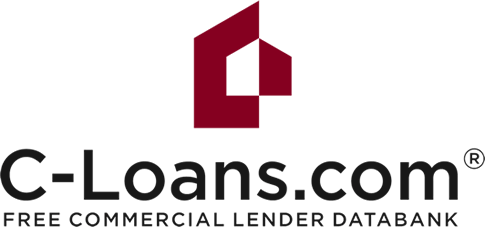What Are Commercial Loan Rates Today?

Commercial Loan Rates From Banks:
You almost certainly need a permanent loan. A permanent loan is a just a fancy term for a garden-variety first mortgage on a commercial property. A permanent loan has a term of five years or longer, and it must have some amortization. In other words, a little bit of principal is paid down with every loan payment. Most commercial-investment permanent loans, as opposed to multifamily loans, have monthly payments that are amortized over 25 years.
3.16% to 3.91% Fixed
Computed based on five-year Treasuries plus 2.75% to 3.5%. Each of the following strengths will argue for a lower interest:
- The larger the commercial loan amount, typically the lower the interest rate. You will usually enjoy a lower interest rate on a $7 million commercial loan, compared to a $700,000 commercial loan.
- The lower the loan-to-value ratio, the lower the rate you will be able to negotiate with the bank.
- The larger the net worth of the borrower, the lower the interest rate that can be negotiated. Banks will usually insist that the net worth of the borrower be at least as large as the loan amount.
- The more liquid the borrower; i.e., the more cash and marketable securities held by the borrower, the lower the interest rate that can be negotiated. Banks prefer to lend money to borrowers who really don’t need the loan. Try to never go to the bank when your cash reserves are low. Plan ahead!
Commercial banks and credit unions make well over 85% of all permanent loans on commercial property of less than $10 million. If you have good credit, you will almost certainly end up borrowing from a bank.
Commercial banks all offer pretty much the same commercial loan program:
The interest rate is fixed for the first five years. At the beginning of year six, the interest rate is renegotiated one time to market, usually between 2.75% and 3.5% over five-year Treasuries. The interest rate is then fixed for the remaining five years. Therefore the term of the typical commercial permanent loan is ten years. The monthly payments are usually amortized over 25 years (not 30 years). The bank will typically charge you a one-point loan fee. Usually there will be a modest prepayment penalty; maybe 3% in year one, 2% in year two, and one percent thereafter, with a six month window surrounding the rate readjustment (to make sure the bank doesn’t try to raise the interest rate to 20%). A window is period when the loan can be paid off without penalty.


Commercial Loan Rates on Apartments:
Agency lenders – such as Fannie Mae, Freddie Mac, and Ginnie Mae – offer the lowest multifamily loan rates in the country. A multifamily loan is one that is secured by an apartment project containing five or more units.
2.86% to 4.27% Fixed
Computed based on the corresponding
Treasury Bond Rates plus a margin of 2.50% to 3.0%. Corresponding means that if you are seeking a five-year loan, you would add the margin to five-year Treasuries.
- The longer the term you are seeking, the higher the interest rate that you will pay.
- The larger the commercial loan amount, typically the lower the interest rate. You will usually enjoy a lower interest rate on a $7 million multifamily loan, compared to a $1 million loan.
- The lower the loan-to-value ratio, the lower the rate you will be able to negotiate.
- The higher the debt-service-coverage ratio, the lower the interest rate.
- The net worth of the borrower and the amount of his liquidity are not as important for an agency lender, compared to a bank.
Both Fannie Mae and Freddie Mac offer very compelling Small Balance Loan (SBL) loan programs for multifamily loans between $1 million and $7 million. They offer even lower commercial loan rates for larger apartment loans.
The borrower can choose between terms of 5-years (priced over 5), 7-years (priced over 7), and 10-years, 12-years, 15-years, or 30-years (priced over 10). The prepayment penalty will be either a loss-of-yield formula or a declining step-down prepayment penalty.
In normal times, agency lenders will go as high as 80% loan-to-value; but during the COVID-19 Crisis, most deals are closing at 70% to 75% LTV.
Commercial Construction Loan Rates:
Banks and credit unions make over 95% of all commercial construction loans. Commercial construction loans include loans to construct apartment buildings of five or more units, office buildings, strip centers, industrial buildings, and business properties such as hotels and restaurants.
4.25% to 4.75% Floating
Computed based on the
WSJ Prime Rate plus 1.0% to 1.5%. Each of the following strengths will argue for a lower interest:
- The larger the commercial loan amount, typically the lower the interest rate. You will usually enjoy a lower interest rate on a $7 million construction loan, compared to a $700,000 construction loan.
- The lower the loan-to-cost ratio, the lower the rate you will be able to negotiate with the bank.
- The larger the net worth of the borrower, the lower the interest rate that can be negotiated. Banks will usually insist that the net worth of the borrower be at least as large as the loan amount.
- The more liquid the borrower; i.e., the more cash and marketable securities held by the borrower, the lower the interest rate that can be negotiated. Banks prefer to lend money to borrowers who really don’t need the loan. Try to never go to the bank when your cash reserves are low. Plan ahead!
The typical construction loan from a bank has a term on one year, although on larger projects it is sometimes possible to negotiate a six-month extension for one-half to one additional point. The bank will charge you between a one-point loan origination fee, and sometimes one-and-a-half points.
The loan will have interest-only monthly payments, but based only on the amount of money that you have drawn down to date. It is customary for the construction lender to build in an interest reserve in to the loan budget large enough to make the interest-only monthly payments for the anticipated term of the construction loan (12 to 18 months).
Construction loans almost never have a prepayment penalty.
SBA 7a Loan Rates:
The SBA 7a loan program is a government sponsored loan designed to help small business owners purchase real estate (and equipment) to occupy or use in their business.
6.0% Floating
Computed based on the
WSJ Prime Rate plus a margin of 2.75%. The interest rate floats monthly over prime, and the loan is fully-amortized over 25 years.
The business owner must intend to occupy at least 51% of the property with his business.
If the business has been operating for at least two years, financing as high as 90% loan-to-value is possible. New businesses are limited to 70% loan-to-value.
SBA loans are NOT made by the Federal government. Instead, they are made by banks (and a handful of non-bank lenders). The Small Business Administration then guarantees a portion – but not all – of the loan. It is very important that grasp this concept. The SBA does not guarantee all of an SBA loan.
For example, suppose you apply for a $1 million loan to buy a campground. The SBA might guarantee $875,000 of that loan, but $125,000 of this loan is no guaranteed. You submit your deal to fourteen SBA lenders, and they all say the say thing. “Pass. We don’t want to have a $125,000 exposure on a campground. We could never run it.”
Then you submit your deal to the fifteenth bank, and the president of that bank owns a $500,000 RV. He goes camping all of the time. He loves campgrounds. They are always crowded, and they generate cash flow like a slot machine. This bank approves your loan!
The lesson to be learned is to use C-Loans.com to submit your SBA loans. In just ten seconds, you can take your four-minute mini-app and then submit it to six more SBA lenders… and then six more… and then six more.


Conduit (CMBS) Loan Rates:
Conduits are specialized commercial mortgage companies or divisions of big money center banks that make very large first mortgages, secured by very standard commercial properties, that are destined for securitization as commercial mortgage-backed securities (“CMBS”).
2.21% to 3.71% Fixed
Computed based on the
Ten-Year Swap Rate plus 1.4% to 2.9%. Each of the following strengths will argue for a lower interest:
- The larger the commercial loan amount, typically the lower the interest rate. You will usually enjoy a lower interest rate on a $50 million CMBS loan, compared to a $5 million CMBS loan.
- The higher the Debt Yield Ratio, the lower the rate you will be able to negotiate with the conduit.
- The lower the loan-to-value ratio, the lower the interest rate that can be negotiated.
- The net worth of the borrower and his liquidity are not quite as important for a conduit as a bank; although a net-worth-to-loan-size ratio of at least 1.0 may be required on smaller loans (less than $10 million).
Conduits typically only lend on the Four Basic Food Groups – multifamily, office, retail, and industrial buildings.
Conduits loans are very large, typically larger than $5 million to as higher as $500 million or even more.
Conduit loans are typically amortized over 25 years and fixed for the full ten-year term. You cannot pay off the loan for the first five years (lockout clause), and thereafter there is an absolutely brutal prepayment penalty known as defeasance.













